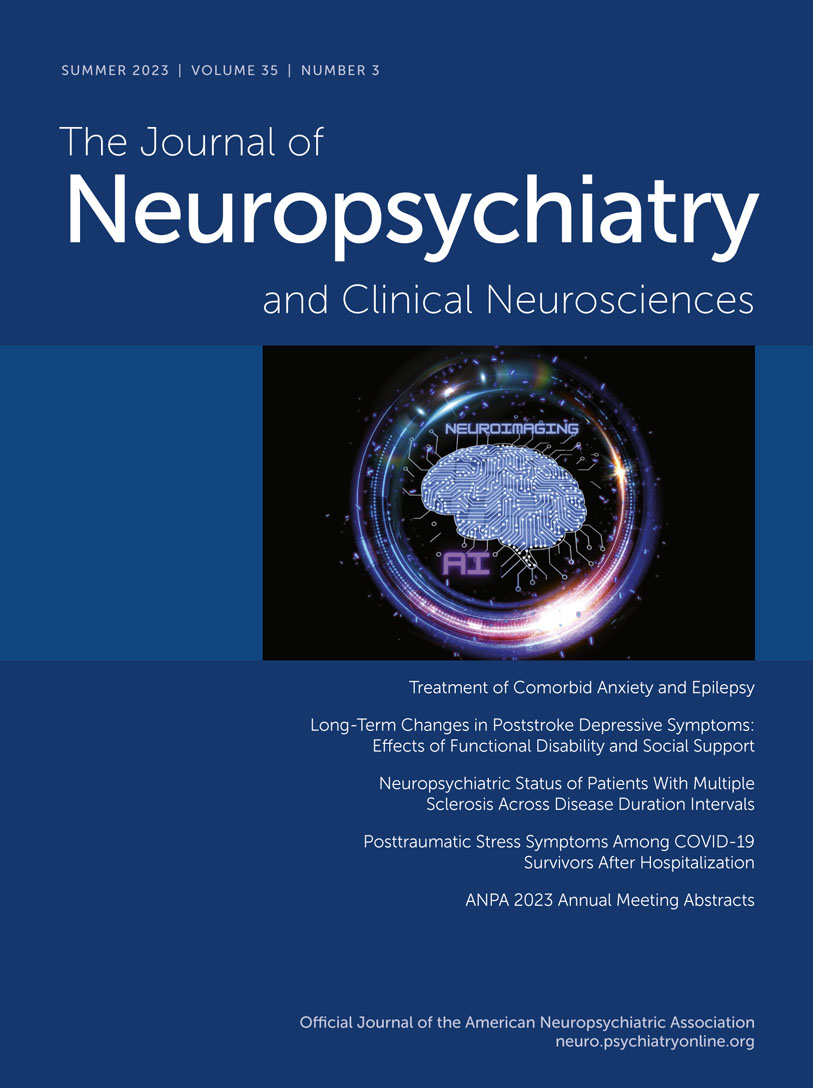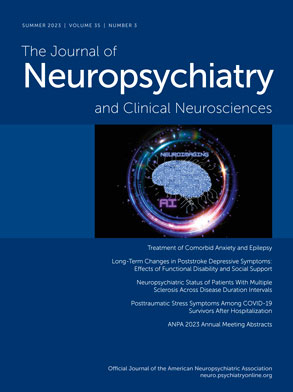Hate, defined here as intense dislike that encourages the elimination of others, involves dehumanization, or the denial of human qualities to others. Despite the importance of understanding the neuropsychiatry of hate, clinicians and investigators have devoted relatively little effort to its study. A review of the existing, albeit limited, literature suggests that hate depends on sufficiently dehumanizing others in order to permit their elimination. A potential brain mechanism for hate appears to involve an “animalistic” infrahumanization that results in withholding empathy from the devalued targets; this mechanism may be mediated by the inferior frontal cortex (IFC) (
1). What follows is an attempt to support this hypothesis.
As hate crimes, exemplified by horrific shootings at houses of worship and other public venues, continue to plague the United States, neurologists and psychiatrists may have an increasingly important role in elucidating the brain mechanisms that underlie hateful behavior. Although hatred is a major scourge of humankind, there is limited consensus on the nature of this phenomenon. There is disagreement as to whether hate is even an emotion. While some define hate as a deep, enduring, intense emotion (
2), others consider it a long-lasting attitude or disposition of intense dislike punctuated by negative emotions such as anger (
3). Whether emotion or disposition, there is additional disagreement on whether hate necessarily leads to an impulse to socially, psychologically, or physically eliminate its target. Nevertheless, hate that leads to negative impulses toward others is the source of much human tragedy.
Given the controversy over the definition of hate, it is not surprising that there are a wide range of theories that attempt to explain hateful behavior. First, there are theories that reflect social psychological principles such as the need to belong and conform to social groups, pressures, norms, and rules. These social influences promote compliance with hateful behavior through deindividuation and group anonymity, diffusion of responsibility, passive compliance, blind obedience to authority, and ingroup versus outgroup distinctions (
4). Second, some personality theories view certain people as being predisposed to hateful behavior, having a negative view of others, and possessing personality attributes that include authoritarianism and social dominance (
5). These people homogenize all members of an outgroup and attribute deficient and negative character traits to them; thus, hateful individuals devalue and morally exclude outgroup members. Finally, there are direct theories of hate, such as Sternberg’s duplex theory (
6). This theory proposes that hate involves passion, commitment, and a negation of intimacy, which are derived through stories that involve prototypes of targets with negative characteristics. The major feature that all of these theories seem to have in common is the need to dehumanize others, which is best seen as a cognitive heuristic that denies the human qualities of a hated “them.”
The literature on dehumanization and its relation to the brain distinguishes two main forms of dehumanization: treating others as animals (devaluing through infrahumanization) and treating others as objects (a mechanistic unawareness of their basic humanity) (
7). Investigators describe infrahumanization as the perception that outgroup individuals lack uniquely human traits, particularly secondary emotions, while retaining the basic emotions evident in other animals (
8). Haslam’s dual model (
7) further applies the term “animalistic dehumanization” to this devaluing of others as subhuman or nonhuman animals (e.g., “swine,” “monkeys,” and “vermin”), which arouses feelings of disgust and revulsion toward outgroups and makes harming them easier (
9). Animalistic dehumanization normally occurs as a restraint on empathy when needed, such as situations involving social dominance or self-protection (e.g., averting one’s eyes from a panhandler) (
10) and probably originates from activity in the ventrolateral prefrontal region—most probably the IFC (
1). Haslam’s dual model further distinguishes a second form of dehumanization that results from a perceived lack of human nature or a perceived lack of being a human with an intentional mind (
7,
11). This form of “mechanistic dehumanization,” which denies the existence of a mental life (“mentalization”) with thoughts, feelings, beliefs, and agency in others, sees those who are hated as nonliving machines or objects, resulting in feelings of indifference toward them (
7). Mechanistic dehumanization is associated with decreased mesial prefrontal activity involving the ventromedial prefrontal cortex and perigenual anterior cingulate cortex (
12) and decreased parietal and default mode network function (
1).
Taking the theories of hate and the studies on dehumanization into consideration, hate may depend on animalistic infrahumanization with heightened activity in the IFC facilitating disdain and disgust for the devalued target. The absence of moral emotional engagement, including hate, among frontolimbic brain-injured patients, such as those with frontotemporal dementia (FTD) (
13), highlights the differential association of hate with animalistic dehumanization rather than with mechanistic dehumanization. Although the neuropathology of FTD is centered in the mesial frontal, anterior insula, and anterior temporal lobe structures (
14)—regions purported to overlap with a proposed hate network (
15)—patients with damage to these structures may have prominent mechanical dehumanization and indifference to others without the presence of hate.
Actions based on hate continue to have grave consequences and require a more studied approach to cognitive factors, such as the type and origin of an underlying dehumanization that encourages harm toward others. Hate may emerge from a heightened normal mechanism for devaluing others, possibly mediated by the IFC, rather than the adulteration of mentalization seen with disease involving predominantly frontal dysfunction. Clearly this is a proposed starting point, or a hypothesis, for approaching an understanding of hate; hopefully, this hypothesis can stimulate further investigation of the neuropsychiatric mechanisms underlying hate, with an eventual goal of guiding efforts to mitigate its expression.

